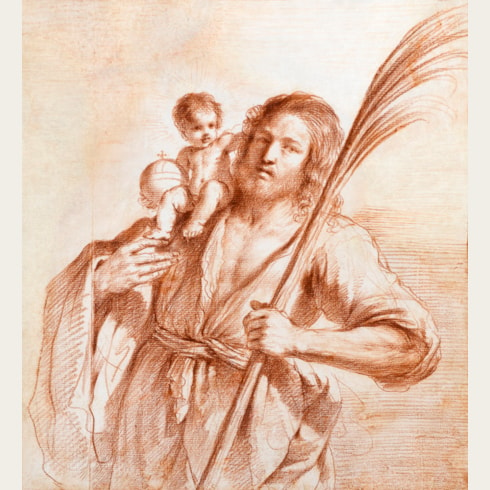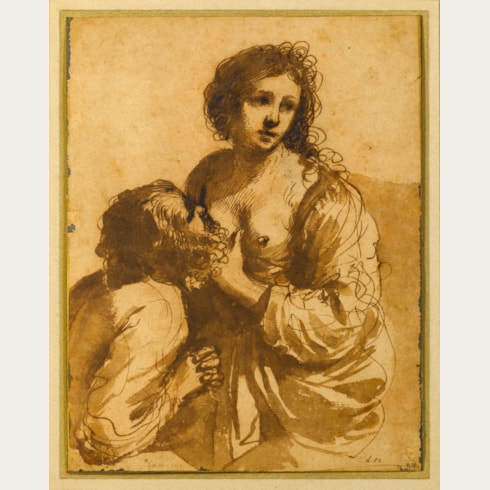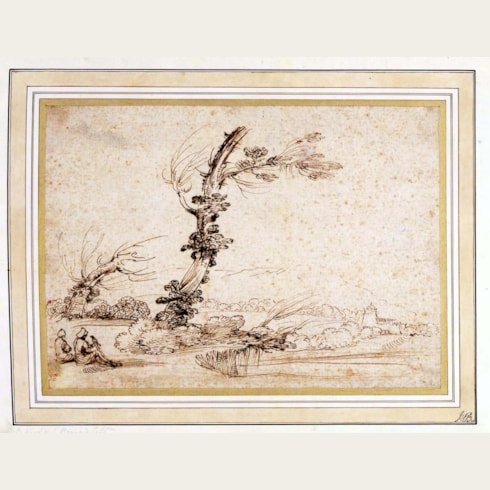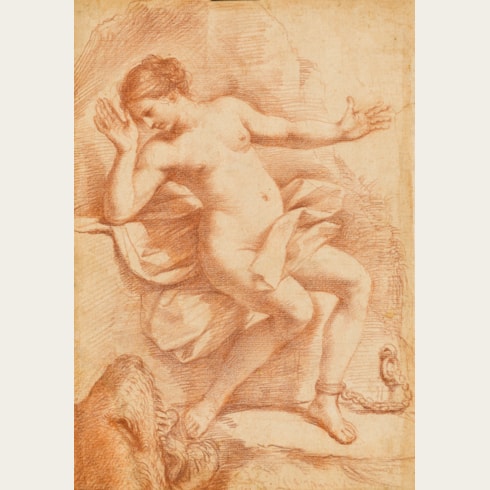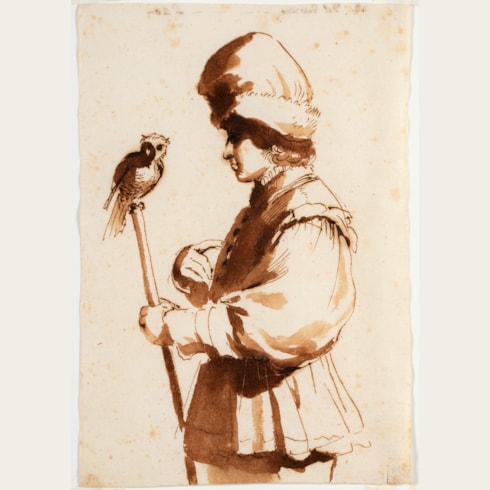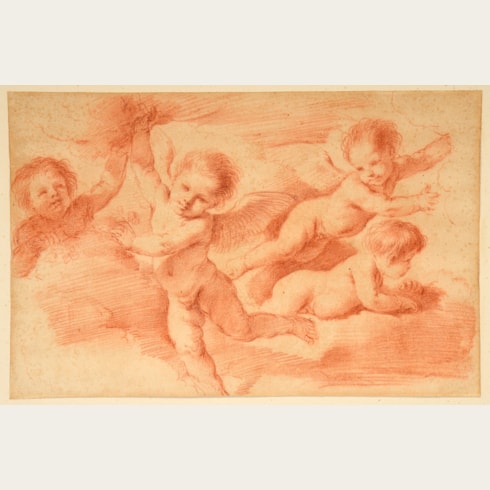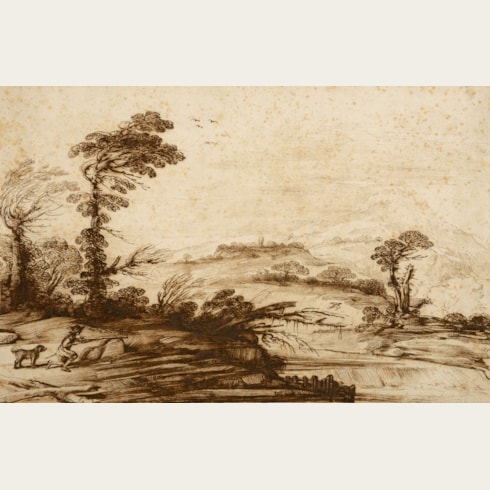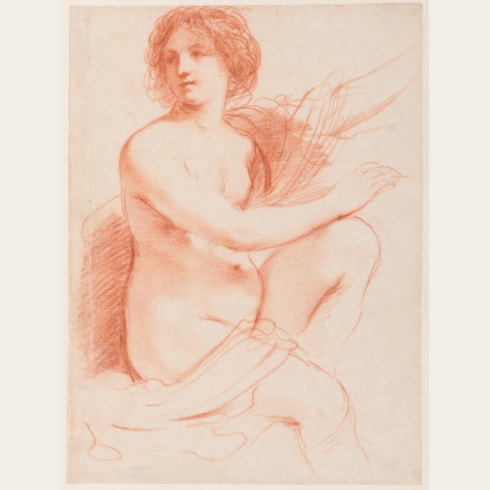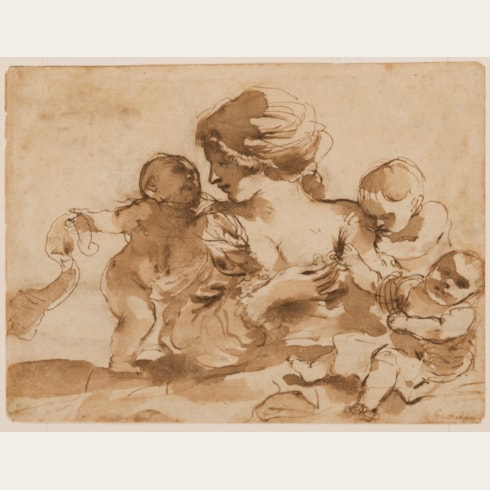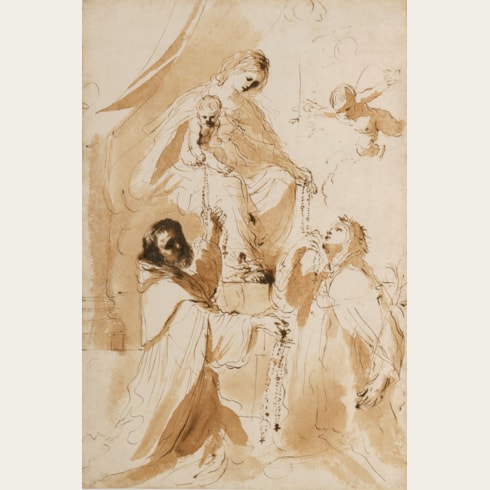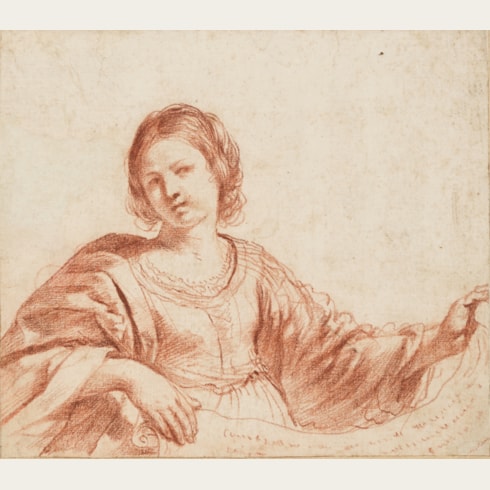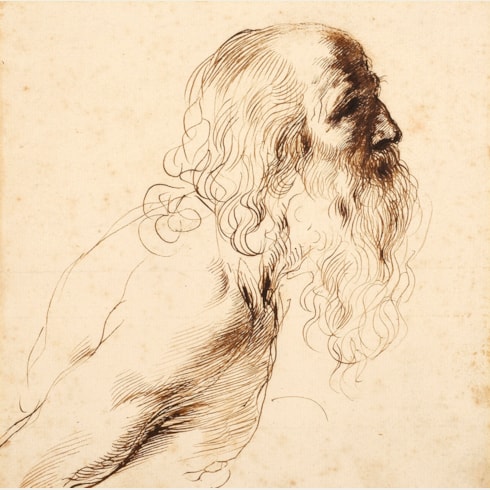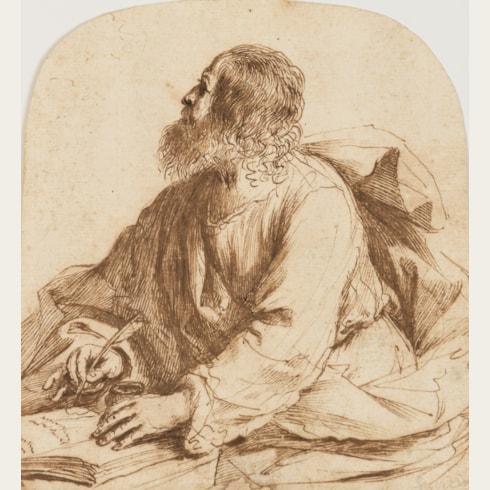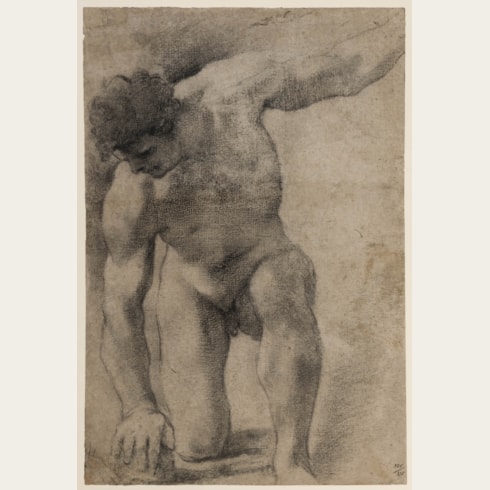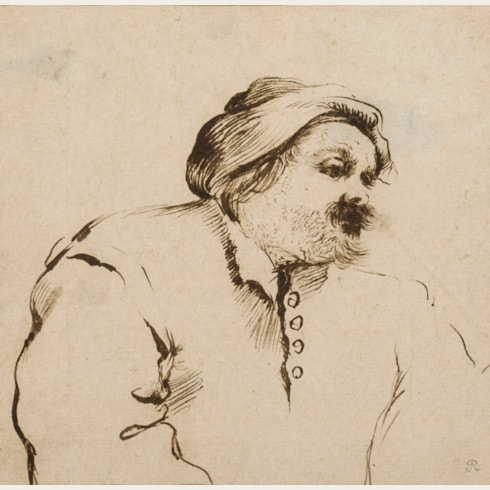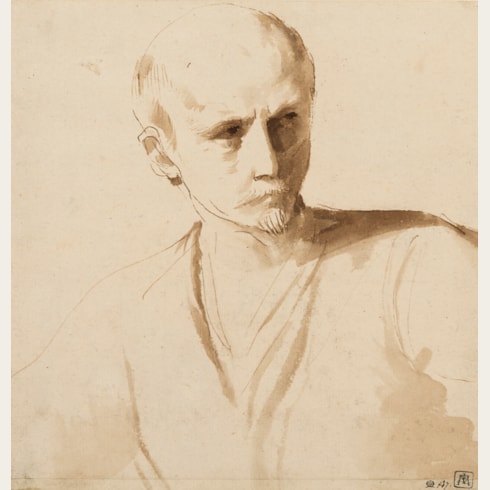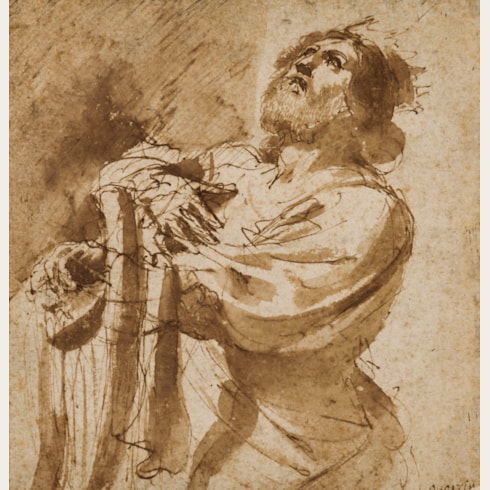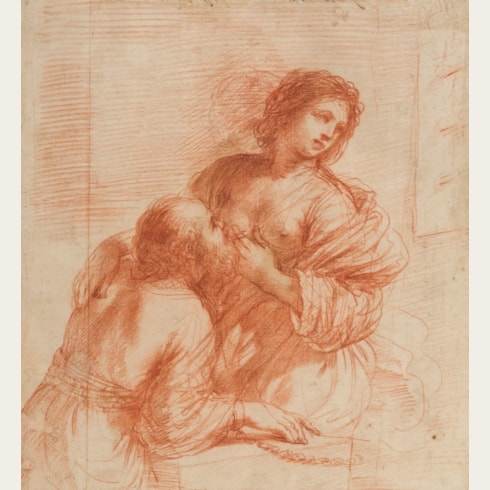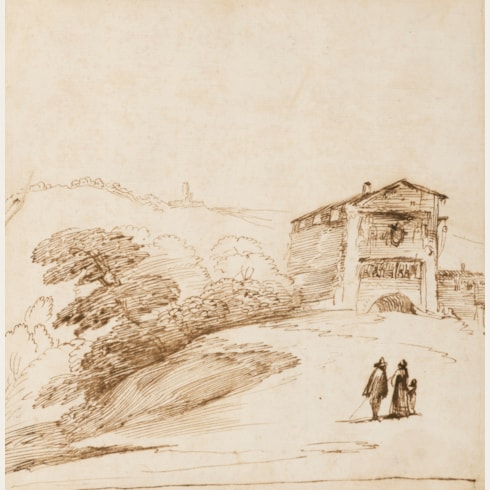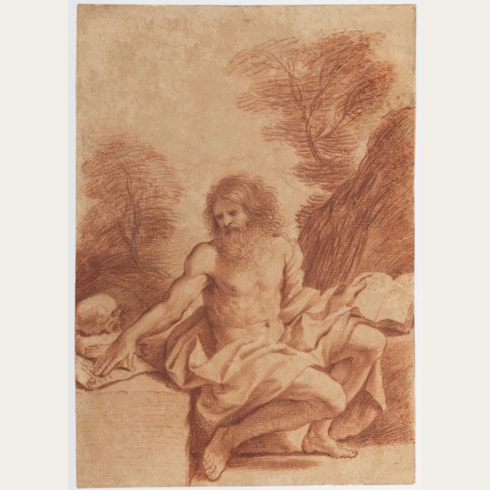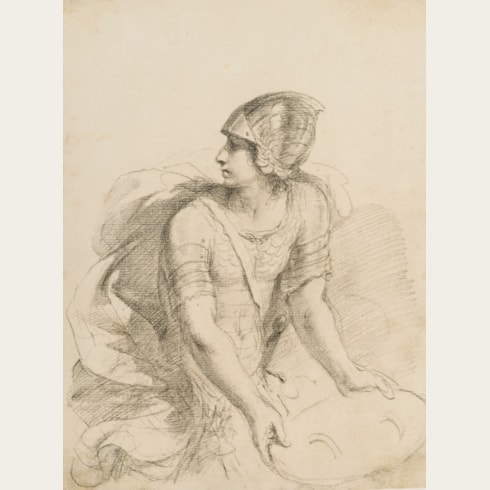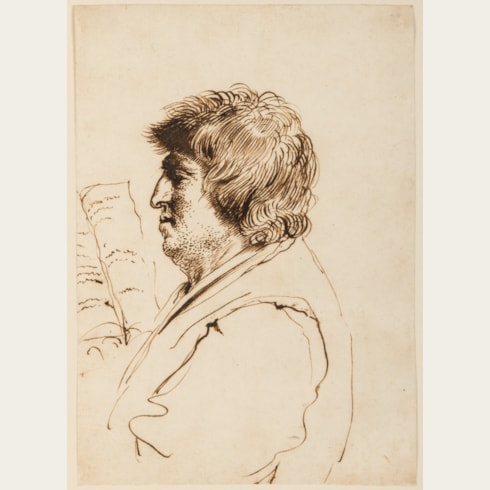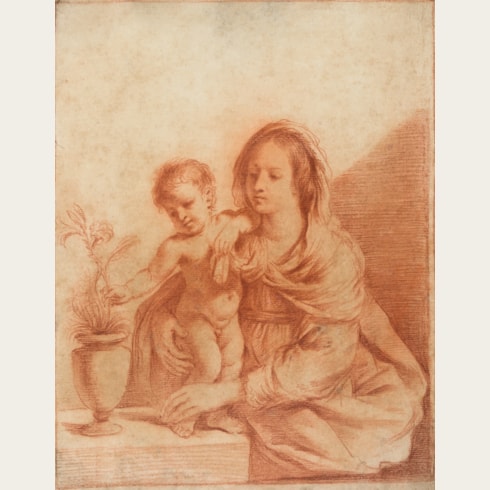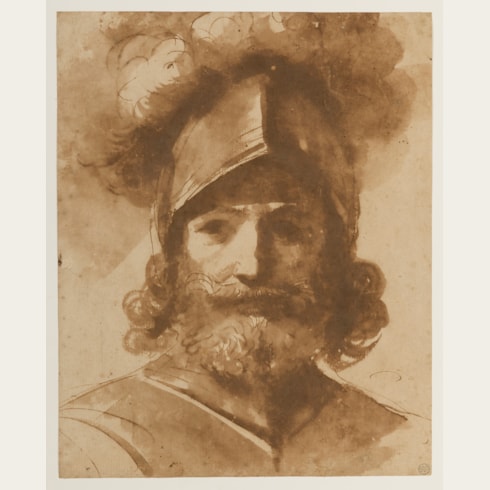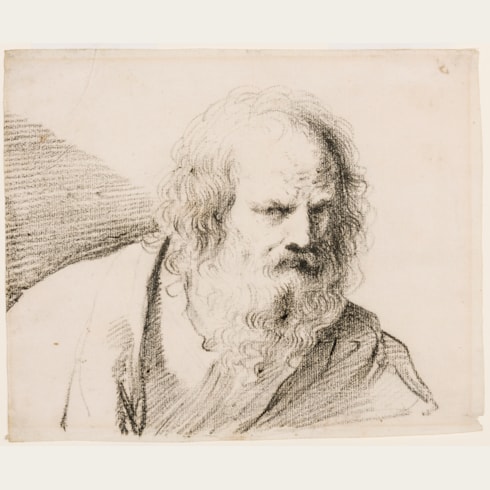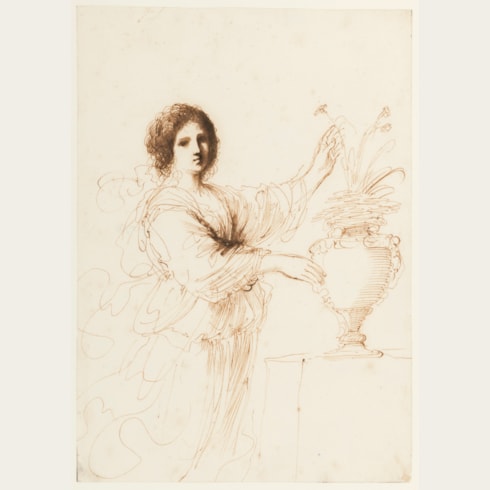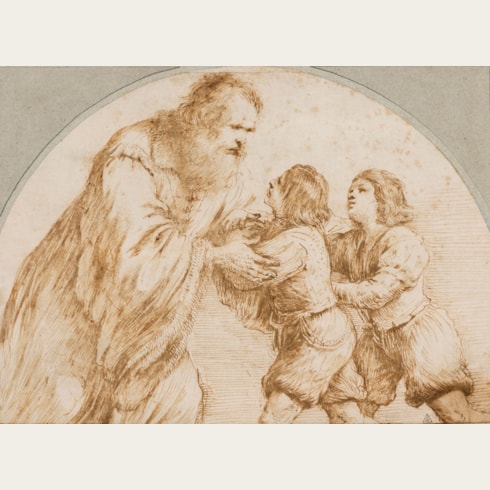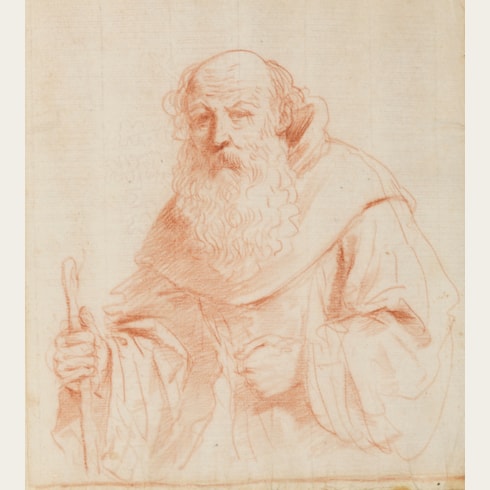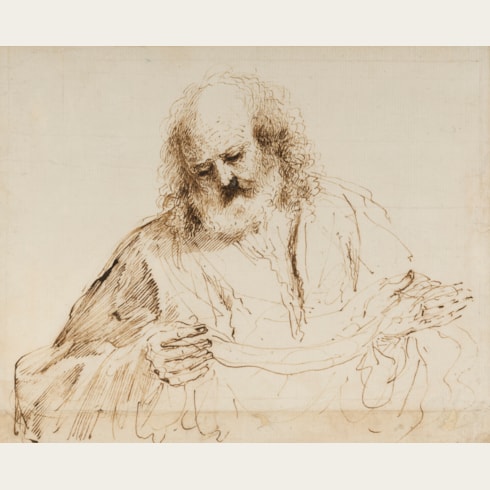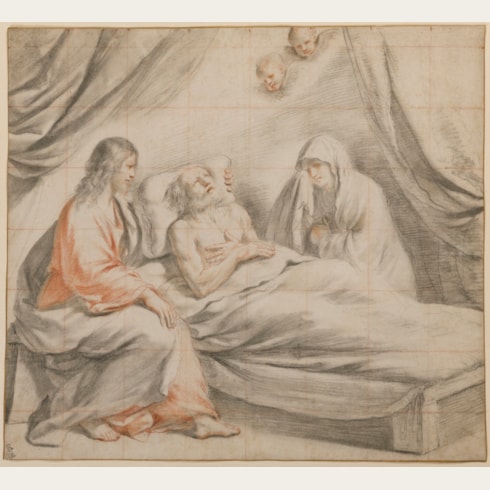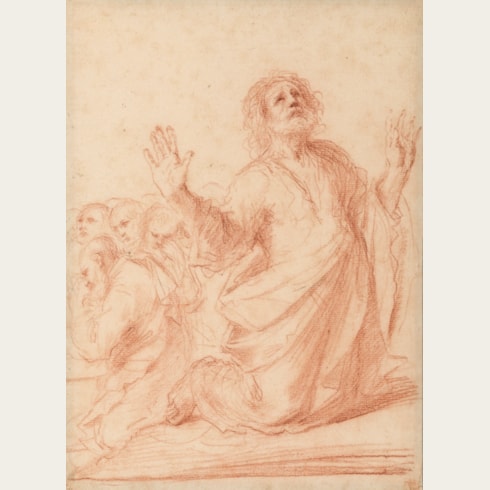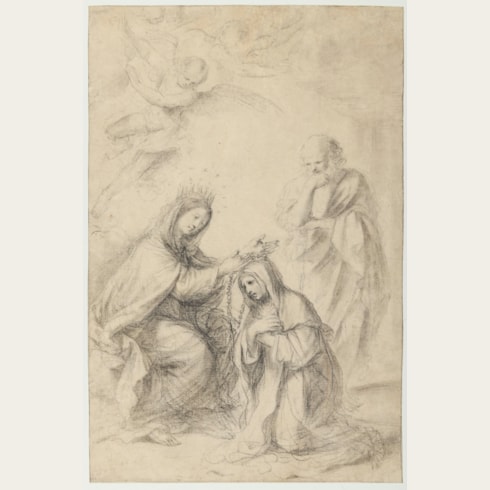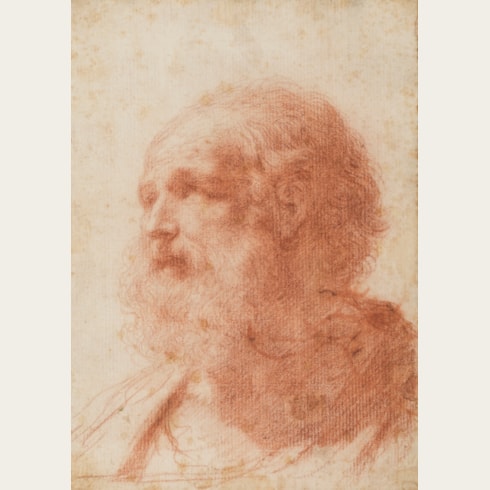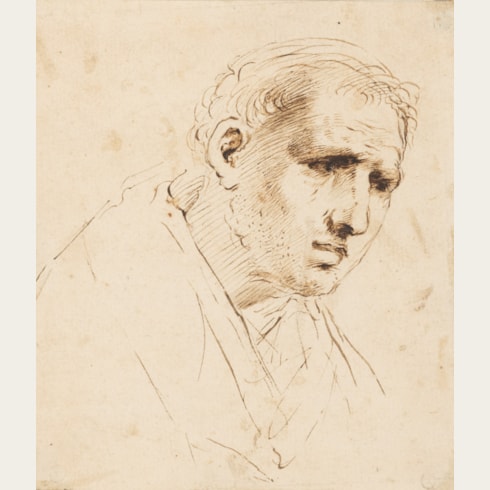Giovanni Francesco Barbieri GUERCINO
(Cento 1591 - Bologna 1666)
Lot and his Daughters
Laid down on an 18th century English mount, inscribed Guercino at the bottom.
Numbered 544. at the upper right of the mount.
180 x 235 mm. (7 1/8 x 8 7/8 in.)
Painted when the artist was in his late twenties, the Lot and his Daughters is thought to have been the first of the four Ludovisi pictures to be painted by Guercino. The importance of the commission is reflected in the fact that seven preparatory drawings for the painting, including the present sheet, are known or recorded. Other extant compositional studies for the painting include drawings in the Louvre, the Hermitage in St. Petersburg and the Pinacoteca di Brera in Milan, as well as a double-sided sheet in the Szépmüvészeti Müzeum in Budapest. In addition, Nicholas Turner has identified a drawing in the collection of the Biblioteca Nacional in Madrid as a study for the Escorial painting, while another compositional study for the Lot and his Daughters was once among the large number of drawings by Guercino in the collection of the 18th century portrait painter and collector Thomas Hudson, and is now lost, although its appearance is recorded in a colour engraving of 1763.
The drawings for the 1617 painting of Lot and his Daughters show Guercino experimenting with two different compositional ideas; either with the figures shown side by side in a line, as in the Louvre and Hermitage drawings, or with the three figures arranged in a pyramidical composition, as seen in both sides of the Budapest drawing and the drawing in the Brera, as well as the final painting. David Stone has noted of the present sheet that ‘Guercino conceived of a much sexier treatment for one of the daughters. Placed on the right of the composition, she is shown from behind in an erotic, langourous pose. In the final, painted version, by contrast, she is shifted to the left, shown in profile, and given a more decorous, upright position. Whereas in the drawing she is more passive, in the painting she aggressively helps tip back Lot's wine glass. Guercino often revised the more discursive or genre-like elements of his preparatory drawings when he got to the painting stage. The rather open disposition of figures in the present sheet has been carefully re-choreographed in the Escorial painting to form a tight triangle - in fact, the heads form a triangle within the overall triangular design. Especially brilliant is the idea of a pinwheel like movement that expresses, as a design conceit, Lot's drunkenness.’
The present sheet, first mentioned in a footnote by Sir Denis Mahon in 1968 exhibition catalogue, has remained very little known to scholars, and indeed does not appear to have ever been illustrated before now. The drawing has a long and distinguished English provenance dating back to the 18th century, and belonged to three prominent artist-collectors. The portrait painter Nathaniel Hone (1718-1784), whose collector’s mark is stamped at the lower right of the sheet, was a founder member of the Royal Academy, and a noted collector of both drawings and prints. His collection was dispersed at auction in two sales, in 1781 and 1785. The drawing also bears the collector’s mark of the 18th century painter Sir Joshua Reynolds (1723-1792), whose collection of several thousand drawings, for the most part Italian works of the 16th and 17th centuries, was sold at two auctions in 1794 and 1798. The present sheet then entered the renowned collection of the Sir Thomas Lawrence (1769-1830), perhaps the single greatest English collector of Old Master drawings.
Giovanni Francesco Barbieri, known as Il Guercino (‘the squinter’) because he was cross-eyed, was by the second decade of the 17th century one of the leading painters in the province of Emilia. Born in Cento, a small town between Bologna and Ferrara, Guercino was largely self-taught, although his early work was strongly influenced by the paintings of Ludovico Carracci. In 1617 he was summoned to Bologna by Alessandro Ludovisi, the Cardinal Archbishop of Bologna, and there painted a number of important altarpieces, typified by the Saint William Receiving the Monastic Habit, painted in 1620 and now in the Pinacoteca Nazionale in Bologna. When Ludovisi was elected Pope Gregory XV in 1621, Guercino was summoned to Rome to work for the pontiff and his nephew, Cardinal Ludovico Ludovisi. It was in Rome that Guercino painted some of his most celebrated works, notably the ceiling fresco of Aurora in the Casino Ludovisi and the large altarpiece of The Burial and Reception into Heaven of Saint Petronilla for an altar in Saint Peter’s. The papacy of Gregory XV was short-lived, however, and on the death of the Pope in 1623 Guercino returned to his native Cento. He remained working in Cento for twenty years, though he continued to receive commissions from patrons throughout Italy and beyond, and turned down offers of employment at the royal courts in London and Paris. Following the death of Guido Reni in 1642, Guercino moved his studio to Bologna, where he received commissions for religious pictures of the sort that Reni had specialized in, and soon inherited his position as the leading painter in the city.
Guercino was among the most prolific draughtsmen of the 17th century in Italy, and his preferred medium was pen and brown ink, although he also worked in red chalk, black chalk, and charcoal. He appears to have assiduously kept his drawings throughout his long career, and to have only parted with a few of them. Indeed, more drawings by him survive today than by any other Italian artist of the period. On his death in 1666 all of the numerous surviving sheets in his studio passed to his nephews and heirs, the painters Benedetto and Cesare Gennari, known as the ‘Casa Gennari’.
The drawings of Guercino, which include figural and compositional studies, landscapes, caricatures and genre scenes, have always been coveted by later collectors and connoisseurs. Indeed, the 18th century amateur Pierre-Jean Mariette noted of the artist that ‘Ce peintre a outre cela une plume tout-à-faite séduisante’. The largest extant group of drawings by Guercino is today in the Royal Collection at Windsor Castle; these were acquired from the Gennari family by King George III’s librarian, Richard Dalton, between about 1758 and 1764.
Provenance
Probably his sales, London, Christie and Ansell, 4-7 April 1781 or London, Hutchins, 7-15 February 1785
Sir Joshua Reynolds, London (Lugt 2364)
By descent to his niece, Mary Palmer, later Marchioness of Thomond
The posthumous Reynolds sales, London, A. C. de Poggi, 26 May 1794 onwards or London, H. Philips, 5-26 March 1798
Sir Thomas Lawrence, London (Lugt 2445)
Probably purchased after Lawrence’s death, together with the rest of his collection, by Samuel Woodburn, London, in 1834
The Earls of Crawford and Balcarres, Balcarres House, Colinsburgh, Fife
Private collection.
Literature






